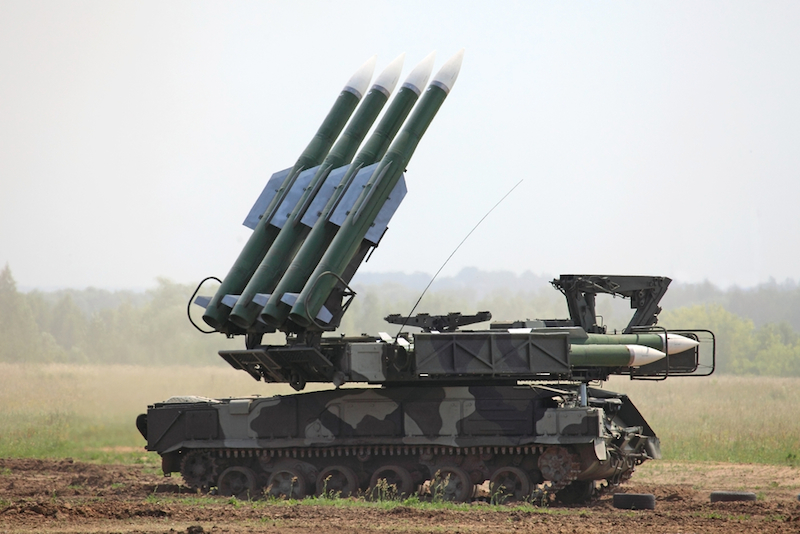Supersonic Missile Downed Malaysia Airlines Plane, Photos Suggest

New photographic evidence of the wreckage of Malaysia Airlines flight MH17 suggests that a Soviet-era supersonic missile most likely took down the Boeing 777 jetliner over Ukraine last week.
Photos published by the New York Times yesterday (July 21) offer a close-up view of debris from the plane crash, with pieces of the commercial jet riddled with small holes that experts say were likely caused by high-velocity shrapnel from an SA-11 missile.
Commonly known as a Buk missile in Russia, the SA-11 is a surface-to-air (SAM) weapon designed to launch from the ground and destroy flying targets, such as incoming missiles, aircraft and smartbombs. But unlike "hit to kill" missiles that crash into their targets and explode, the SA-11 is a fragmentation warhead that explodes before it makes contact with its target. [7 Technologies That Transformed Warfare]
This differentiation could help investigators determine whether it was, in fact, an SA-11 missile that downed Flight MH17. After analyzing the photo evidence from the crash, Reed Foster, an analyst with defense consultancy firm IHS Jane, told the Washington Post that the holes in the surface of the aircraft are fairly uniform in size, indicating that a fragmentation warhead likely caused them.
How fragmentation warheads work
SA-11 missiles are medium-range missiles, guided by radar on the ground in their early stage of flight. But when an SA-11 approaches its target, it switches to an onboard radar system, known as a radar proximity fuse. This feature allows the missile to determine the appropriate distance from its target at which to detonate, said Ian Williams, Director of Advocacy for the Missile Defense Advocacy Alliance in Alexandria, Virginia.
When it does detonate, the missile spews a cloud of shrapnel toward its intended target. With a lethal range that extends approximately 56 feet (17 meters), any aircraft in the missile's path is unlikely to survive the blast, Williams told Live Science in an email.
Sign up for the Live Science daily newsletter now
Get the world’s most fascinating discoveries delivered straight to your inbox.
"Any aircraft in that radius will likely suffer fuselage breaches. Its engines will be destroyed, and it will typically get ripped to pieces," Williams said.
ICYMI, the @FT's photo of remnants of MH17 cockpit, peppered w shrapnel & blown apart by SAM http://t.co/BzVvDq9ndq pic.twitter.com/PN2rr50mDs
— Sam Jones (@samgadjones) July 21, 2014
The SA-11 missile is about 18 feet (5.5 m) long, 1.3 feet (0.4 m) wide, and weighs about 1,430 pounds (650 kilograms). The warhead can travel up to three times the speed of sound. A Buk launcher can fire these missiles up to 72,000 feet (22,000 m), but the weapons can also be used to hit closer targets.
"[The SA-11] has a minimum range of about 30 meters [98 feet]," Williams said "This means it can engage pretty much any type of aircraft, including high-altitude, fixed-wing aircraft and lower-flying helicopters."
When it was hit, the Malaysia Airlines plane was well within range of an SA-11, flying at a normal cruising altitude of 33,000 feet (10,000 m).
Last week, the Pentagon's press secretary Rear Adm. John Kirby told reporters that the U.S. Department of Defense believes an SA-11 missile was responsible for the Malaysia Airlines crash.
While the Pentagon has not been able to confirm whether pro-Russian rebels in Ukraine actually possess a Buk missile system, Kirby said the U.S. is not ruling out the possibility that they do.
Such missiles were reportedly used by pro-Russian rebels to shoot down a Ukrainian cargo plane and fighter jet in the days leading up to the July 17 crash, according to CBS News.
Follow Elizabeth Palermo on Twitter @techEpalermo, Facebook or Google+. Follow Live Science @livescience. We're also on Facebook & Google+. Original article on Live Science.

Elizabeth is a former Live Science associate editor and current director of audience development at the Chamber of Commerce. She graduated with a bachelor of arts degree from George Washington University. Elizabeth has traveled throughout the Americas, studying political systems and indigenous cultures and teaching English to students of all ages.
Ancient 'military outpost' in North Macedonia might be birthplace of Alexander the Great's grandmother
NASA rover discovers out-of-place 'Skull' on Mars, and scientists are baffled
A long-lost ice sheet could predict the future of New York City — one in which Lower Manhattan and Coney Island are 'perpetually submerged'









